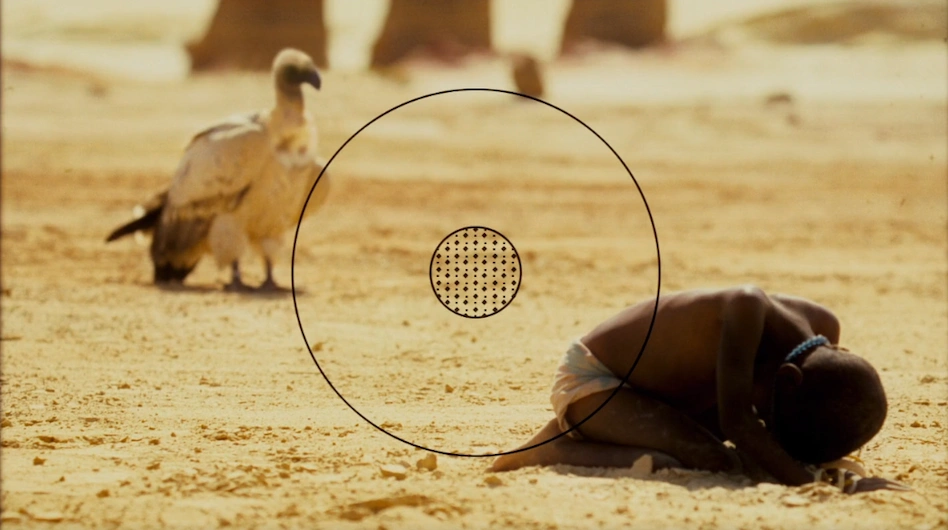The Photograph That Killed a Man: The Story of Kevin Carter
June 18, 2024
Biography Journalism

Kevin Carter, a South African photojournalist, captured one of the most harrowing and controversial images in the history of photojournalism. The photograph, taken during a famine in Sudan in 1993, depicted a starving child collapsed on the ground while a vulture loomed ominously in the background. This powerful image won Carter the Pulitzer Prize but also sparked intense debate and criticism. Tragically, the haunting impact of this photograph and the ethical dilemmas surrounding it contributed to Carter's death by suicide in 1994. This blog delves into the story of Kevin Carter, the photograph, and the profound questions it raises about journalism, ethics, and the human condition.
The Background: Kevin Carter's Early Life and Career
Early Life
Kevin Carter was born on September 13, 1960, in Johannesburg, South Africa. Growing up during the apartheid era, Carter witnessed the brutal racial segregation and violence that characterized his country. His early experiences with injustice and inequality would shape his career and fuel his passion for photojournalism.
Career Beginnings
Carter started his career as a sports photographer but soon found his calling in documenting the harsh realities of apartheid. He joined the "Bang-Bang Club," a group of four fearless photojournalists who covered the violent clashes between anti-apartheid activists and government forces. Carter's photographs from this period were raw, powerful, and often dangerous to capture, earning him both acclaim and criticism.
The Photograph: A Moment of Global Attention
The Scene in Sudan
In March 1993, Carter traveled to Sudan to cover the famine ravaging the country. On the outskirts of a feeding center in Ayod, he witnessed a heart-wrenching scene: a severely malnourished child attempting to crawl to the center for food, while a vulture landed nearby, seemingly waiting for the child to die. Carter took a photograph of this moment, capturing the stark contrast between life and death, hope and despair.
The Impact of the Photograph
The photograph was published in The New York Times on March 26, 1993, and quickly garnered international attention. It became a symbol of the suffering and neglect faced by famine-stricken regions in Africa. The image's visceral impact sparked global outrage, prompting discussions about humanitarian aid and the responsibilities of the international community.
Winning the Pulitzer Prize
In 1994, Carter's photograph was awarded the Pulitzer Prize for Feature Photography. The recognition brought Carter immense acclaim, but it also intensified the scrutiny and criticism he faced for taking the photo.
The Ethical Dilemma: Criticism and Controversy
Public Backlash
Despite the photograph's impact in raising awareness about the famine, Carter faced significant backlash. Critics accused him of exploiting the child's suffering for personal gain and questioned why he did not intervene to help the child. The debate centered on the ethical responsibilities of photojournalists: Should they remain detached observers documenting the truth, or should they intervene to save lives?
Carter's Response
Carter explained that he had waited for about 20 minutes, hoping the vulture would fly away, before finally taking the photograph. He then chased the bird away and watched as the child continued toward the feeding center. However, this explanation did little to quell the public's anger. The ethical questions surrounding the photograph haunted Carter, who struggled with the moral implications of his work.
The Personal Toll: Kevin Carter's Struggle
Battling Guilt and Depression
The intense scrutiny and criticism took a severe toll on Carter's mental health. He was already battling depression and the trauma of witnessing countless atrocities during his career. The relentless public backlash exacerbated his feelings of guilt and helplessness.
The Death of a Friend
In addition to his personal struggles, Carter was devastated by the death of his close friend and fellow "Bang-Bang Club" member, Ken Oosterbroek, who was killed while covering a conflict in South Africa. Oosterbroek's death further deepened Carter's despair and sense of loss.
Carter's Suicide
On July 27, 1994, just a few months after receiving the Pulitzer Prize, Kevin Carter took his own life. He left a note expressing his profound sorrow and the unbearable weight of his experiences. Carter's suicide was a tragic end to the life of a man who had dedicated himself to revealing the harsh truths of the world through his lens.
The Legacy: Reflections on Photojournalism and Ethics
The Power of Photography
Kevin Carter's photograph remains one of the most powerful images in the history of photojournalism. It highlights the ability of a single image to provoke global awareness, empathy, and action. The photograph's impact underscores the importance of visual storytelling in shaping public opinion and driving humanitarian efforts.
Ethical Considerations
The ethical dilemmas posed by Carter's photograph continue to resonate in the field of journalism. It raises critical questions about the role of journalists in crisis situations: Should they intervene, or should they document without interference? The balance between professional detachment and human compassion remains a contentious issue in journalism ethics.
The Human Cost
Carter's story also serves as a poignant reminder of the personal toll that witnessing and documenting human suffering can take on journalists. The psychological impact of covering traumatic events is profound, and Carter's tragic end highlights the need for mental health support and awareness within the profession.
Conclusion
Kevin Carter's photograph of the starving child and the vulture is a haunting and powerful image that encapsulates the suffering and neglect faced by many in famine-stricken regions. While the photograph raised global awareness and prompted discussions about humanitarian aid, it also brought to light the ethical complexities and personal struggles faced by photojournalists.
Carter's life and work remind us of the immense power of visual storytelling and the importance of ethical considerations in journalism. His story is a testament to the bravery and vulnerability of those who dedicate their lives to documenting the truth, often at great personal cost. As we reflect on Carter's legacy, we are reminded of the need for compassion, empathy, and support for those who bear witness to the world's most harrowing realities.